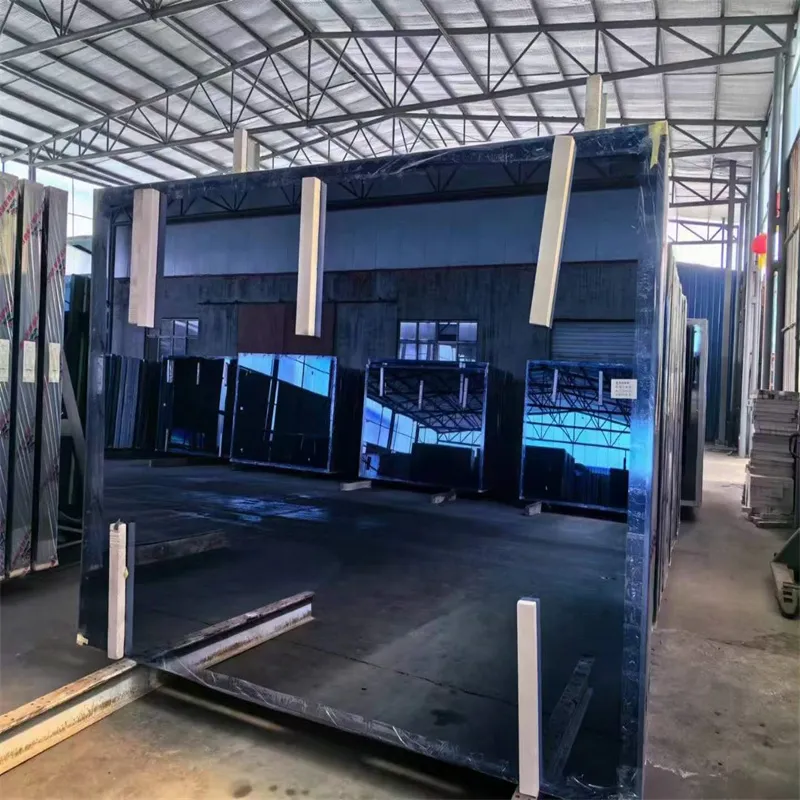Dec . 21, 2024 17:09 Back to list
float annealed glass
The Evolution of Float Annealed Glass A Comprehensive Overview
Float annealed glass, a cornerstone of modern glass production, has transformed both architectural design and everyday applications since its inception. This type of glass, known for its exceptional clarity, uniform thickness, and high quality, is produced through a sophisticated float process that ensures a smooth, flawless surface. In this article, we will explore the history, production process, properties, applications, and environmental implications of float annealed glass.
A Historical Perspective
The journey of glass-making dates back thousands of years, with early civilizations experimenting with various techniques. However, it wasn’t until the 20th century that the float glass process was developed, revolutionizing the industry. In the 1950s, Sir Alistair Pilkington introduced the float technique that allowed for a more consistent and higher quality product. The method involves pouring molten glass onto molten tin, where it spreads out evenly, leading to a flat sheet of glass. This innovation set the stage for the widespread use of float annealed glass in buildings and various products.
The Production Process
The production of float annealed glass involves several key steps. First, raw materials such as silica sand, soda ash, and limestone are mixed and heated in a furnace to create molten glass at temperatures exceeding 1,600 degrees Celsius. Once the glass reaches this molten state, it is poured onto a pool of molten tin in a controlled environment. This floating process not only gives the glass its name but also results in a perfectly flat and smooth surface.
After the initial float process, the glass must undergo annealing, a gradual cooling technique that relieves internal stresses. The annealing lehr—an industrial furnace—cools the glass slowly, enabling it to maintain its integrity and preventing breakage during handling and installation. The final product is then cut into sheets of various sizes, ready for processing and application in different sectors.
Properties of Float Annealed Glass
Float annealed glass is characterized by its remarkable optical clarity and smooth finish. These properties make it an ideal choice for applications where visual aesthetics are paramount. The glass is also known for its uniform thickness and high level of transparency, allowing for maximum light transmission. Additionally, it can be treated to enhance its strength and thermal resistance, although it is generally less robust compared to tempered or laminated glass.
float annealed glass

Another important attribute of float annealed glass is its versatility. It can be easily cut, drilled, and processed into different forms, making it suitable for a wide range of uses, from windows and facades to table tops and mirrors.
Applications in Modern Architecture and Design
The architectural industry has greatly benefited from the widespread use of float annealed glass. Its ability to allow natural light into spaces while providing a clear view has made it a popular choice for residential, commercial, and industrial buildings. Floating glass facades offer modern aesthetics with energy-efficient properties, and large glass panels can create seamless indoor-outdoor transitions.
Beyond architecture, float annealed glass finds its application in other fields such as automotive, manufacturing, and household products. From car windshields to shower enclosures, its strength and clarity serve critical roles in both functional and decorative elements.
Environmental Considerations
With increased awareness of environmental sustainability, the glass industry is evolving to reduce its ecological footprint. Float annealed glass can be recycled, which minimizes waste and conserves energy. Efforts are being made to utilize more sustainable raw materials and improve production efficiency. Additionally, advances in coatings and treatments can enhance energy efficiency, making float annealed glass an even more attractive option for eco-conscious consumers.
Conclusion
Float annealed glass has undeniably impacted the way we design and construct our living spaces, offering a blend of beauty and functionality. Its historical significance, coupled with modern technological advancements, solidifies its position as a critical material in contemporary architecture and design. As the industry continues to innovate, float annealed glass will remain a vital component in our built environment, paving the way for a more transparent and sustainable future.
-
Safety and Style with Premium Laminated Glass Solutions
NewsJun.24,2025
-
Reinvents Security with Premium Wired Glass
NewsJun.24,2025
-
Premium Float Glass Line for Modern Architecture
NewsJun.24,2025
-
Low Emissivity Glass for Energy-Efficient Architecture
NewsJun.24,2025
-
High-Performance Insulated Glass Solutions for Modern Architecture
NewsJun.24,2025
-
Elevates Interior Style with Premium Silver Mirror
NewsJun.24,2025
Related PRODUCTS














